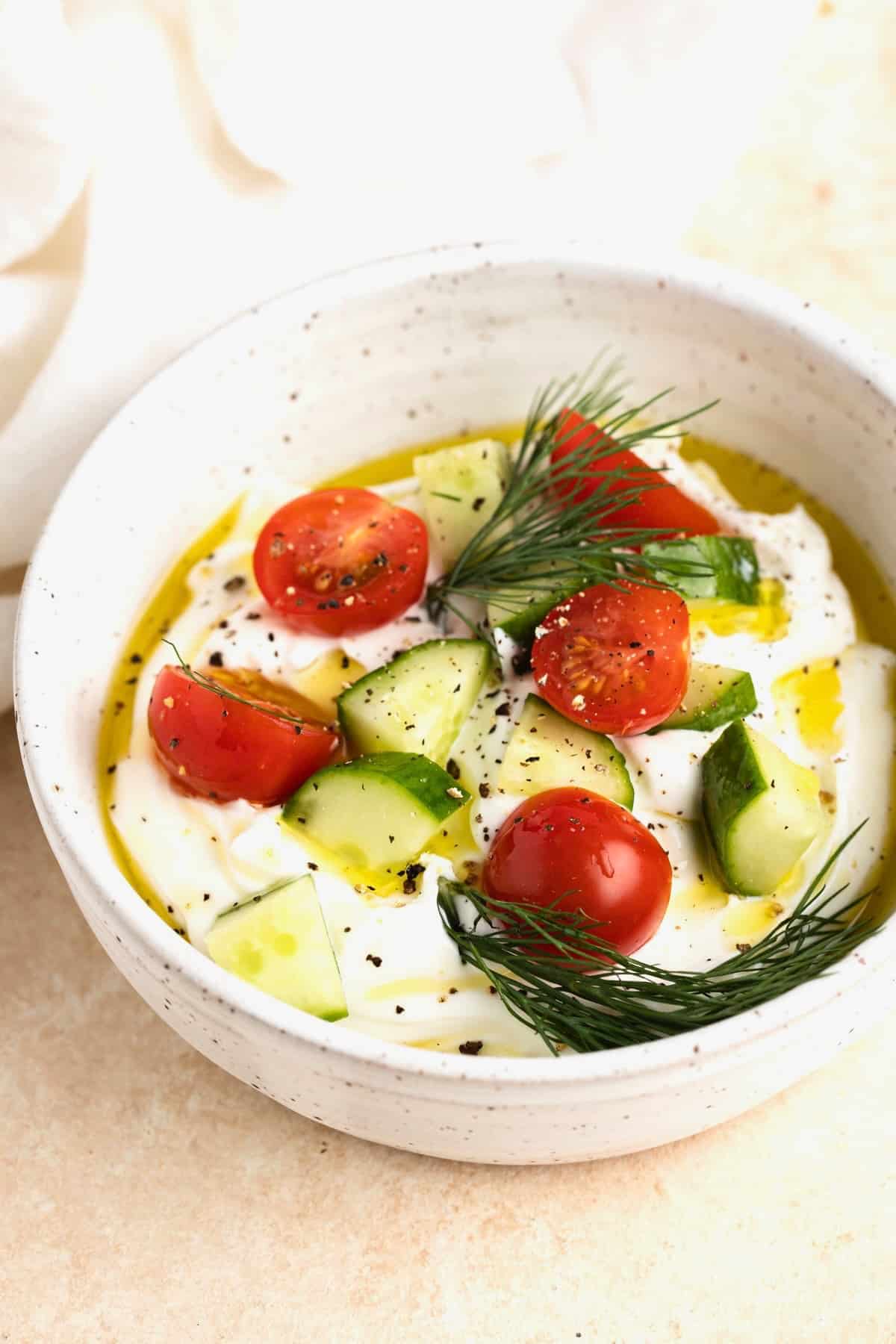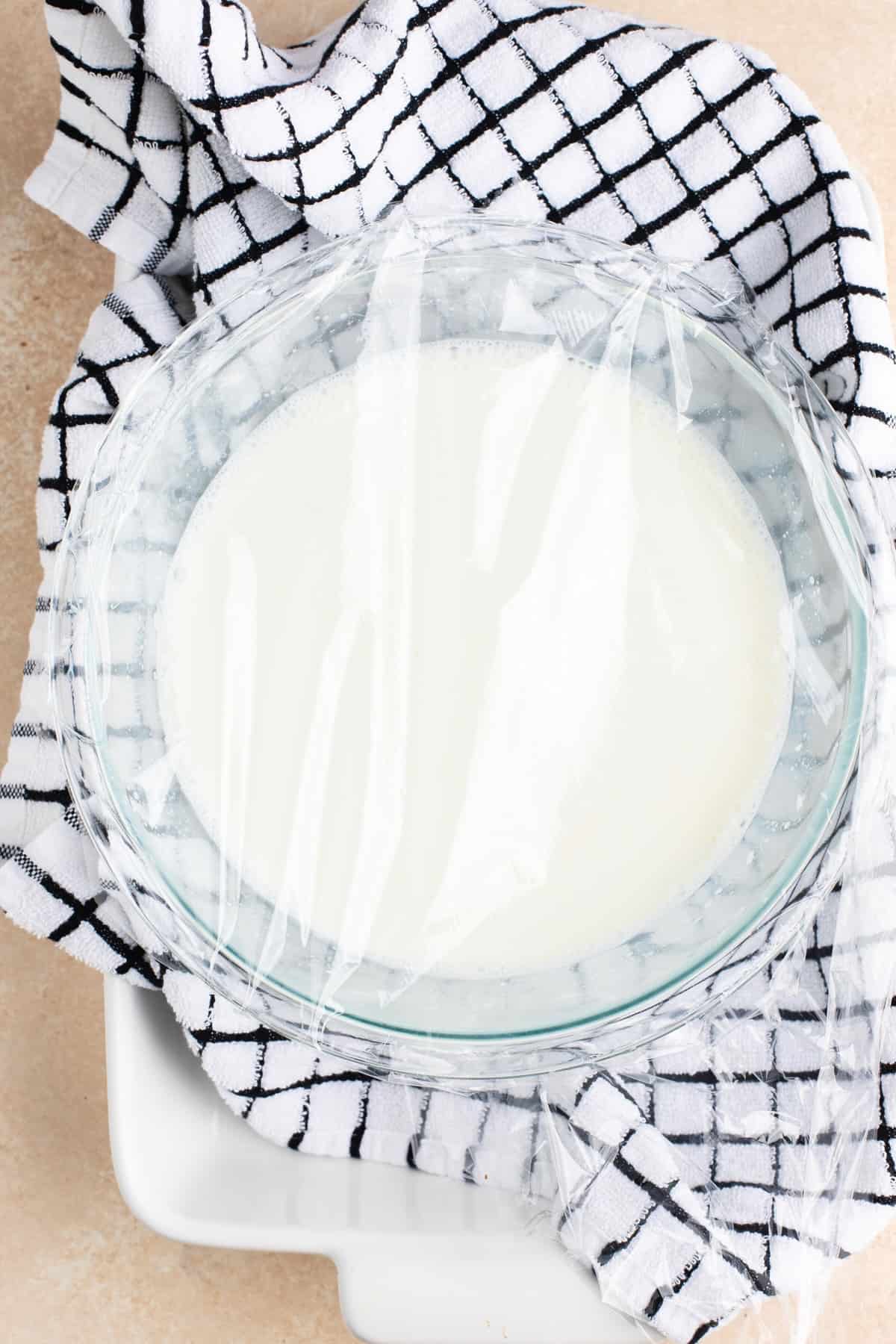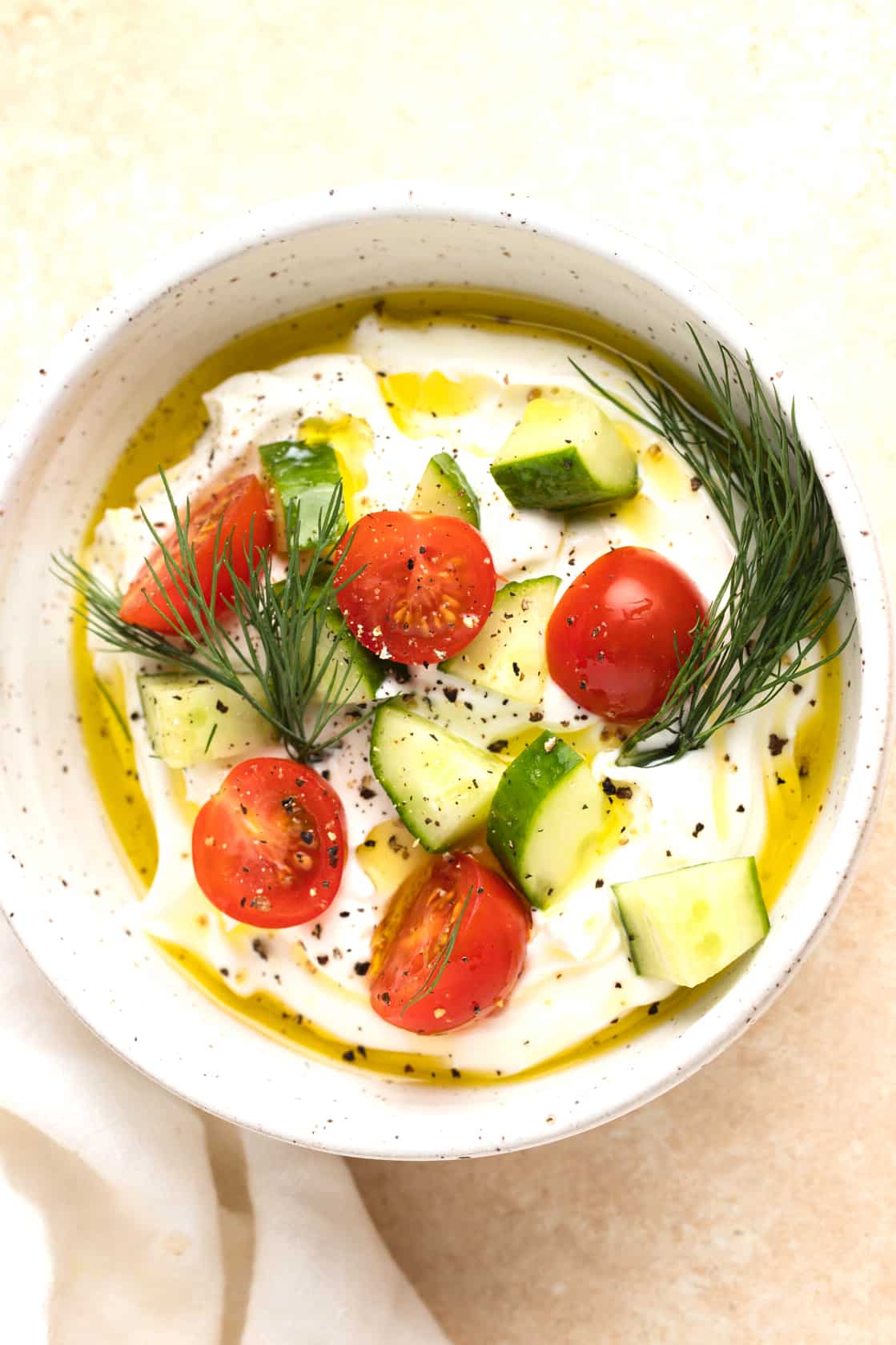Unearth the magic of tradition in your own kitchen with this homemade Greek yogurt recipe! It’s thick, creamy and refreshing! Packed with probiotics and nutrients, it’s not just a treat, it’s a gift to your well-being!
So, how to make your own homemade Greek yogurt.. This might sound a little scary but the process is relatively simple if you follow my recipe. And you’ll have your own fresh yogurt for every possible reason you might need it!
What is Greek yogurt?
Greek yogurt may be one of the most famous ingredients in Greek cuisine. It looks a lot like regular yogurt, but the whey you see at the top of most yogurts is removed. This yellowish liquid is strained during the creation of Greek yogurt and is therefore sometimes called “strained yogurt.”
The result is that it is thicker than regular yogurt and has a higher amount of protein while being lower in sugar. It has more fat content unless you use fat-free milk (which I don’t recommend).

How to make Greek yogurt – basic ingredients
There are only two ingredients needed to make homemade Greek-style yogurt: whole milk and live natural yogurt. Go for a plain yogurt for this recipe and I’ve always found that a natural yogurt is better than a live Greek yogurt because it has a looser consistency and mixes better with the milk.
Avoid using UHT milk or shelf-stable milk for this recipe as these do not give good results.
How to make Greek yogurt – Basic preparation tips
There are three basic steps to follow when making homemade Greek yogurt:
- Prepare the milk
- Heat and then cool the mixture
- Strain and cool the yogurt

Prepare the milk
Line a large pot or Dutch oven that will hold all the milk with clean dishtowels and preheat the oven to 40 degrees Celsius / 104 Fahrenheit.
Heat the milk in a large saucepan over medium-high heat, stirring almost constantly with a spatula to prevent it from burning on the bottom of the pan. Bring the temperature of the milk to 82-88 degrees Celsius / 180-190 Fahrenheit, as measured with a sugar thermometer.

Heat the milk for 5 minutes, stirring constantly. If necessary, adjust the heat to keep it within the temperature ranges above.
Add the milk to your glass bowl and allow it to cool to 41-45 degrees Celsius / 105-110 Fahrenheit. Then add the 2 tablespoons of yogurt with seeds. You want the milk to be cold so you don’t kill the yeast and bacteria in the plain yogurt, but you also don’t want it to be cold as they won’t work!
Heat and then cool the mixture
Add the bowl to the towel-lined baking sheet and into the preheated oven. Leave it there for at least 8 hours until the consistency is a little looser than plain yogurt. Cover it with kitchen film and leave it in the fridge overnight.

Take the yogurt out of the fridge and check the consistency. It should be thicker and taste rich, creamy and pleasantly tangy.
Strain and cool the yogurt
Take a large rubber band and use it to secure a piece of cheesecloth over another clean glass bowl. A wide mouth jug would also work. Make sure there is enough in the cheesecloth to rub the yogurt into the indentation.
Put the yogurt back in the fridge and let it drain for about 2 hours so that it has the texture of Greek yogurt.
Exactly how long it lasts depends on the amount of whey in the yogurt and how you like it.
Transfer the yogurt to an airtight container and use within 7 days.
Tips for making homemade Greek yogurt for the first time
Making Greek yogurt is simple once you get the hang of it, but there are a few tips to help you get the best results on your first try.

Because of the number of variables, it’s best to start with a smaller batch on your first try. 600 ml or 2.5 cups of milk and a tablespoon of yogurt are ideal to avoid the first attempt.
Another first time tip if you prefer the full batch size is to test the yogurt with a spoon around the 6 hour mark. If it is the correct consistency, then you can continue to the next step.

Do you have to cook it for 8 hours?
Cooking yogurt for 8 hours can seem like a lot of electricity! So there are some other options. The goal is to have a place with a consistently warm temperature that allows the good bacteria to multiply and curdle the milk.
That means somewhere like a warm laundry cupboard would work too. Even a gas oven with ambient light is probably hot enough to start the yogurt making process.
How to use whey
The yellow liquid that drains from the yogurt is called whey, and there’s a lot you can do with it. For starters, you can use it in place of water for a longer bread life. It is also great to use for marinating lamb ribs.
You can also freeze whey for up to 6 months in an airtight container or jar to use in other recipes.
Can you use your homemade yogurt to start the next batch?
You can use a few spoonfuls of your homemade yogurt to start the next batch, but it takes a little care.
The chances of success depend on how many cultures he grows, and that depends on everything from the temperature to the quality of the yogurt in the first batch. The longer the yogurt is in the refrigerator before attempting to use it in the next batch will also increase the chances of success.
Making time and saving
Freshly made yogurt should be refrigerated and will last for 7 days.

Serving suggestions
There are so many ways you can use Greek yogurt that you’ll never find yourself wasting any. From a simple breakfast with some fruits into smoothies, parfait and like base for diving, you can find hundreds of delicious Greek yogurt ideas. You can even use it for creamy sauces in place of mayonnaise or as part of it sandwich filling.
Delicious recipes with Greek yogurt
Description
How to make homemade Greek yogurt? Not as scary as it sounds! Thick, creamy and heavenly refreshing Greek yogurt!
- 1200ml whole milk (5 cups)
- 2 tbsp live natural yogurt (plain yogurt)
- Preheat the oven to 40 degrees Celsius / 104 Fahrenheit. Line a large pot or Dutch oven large enough to hold a glass mixing bowl that will hold all the milk with clean dishtowels.
- Heat the milk over medium-high heat in a large saucepan, stirring almost constantly with a spatula to make sure the milk doesn’t burn to the bottom of the pan. Bring the milk to 82-88 degrees Celsius / 180-190 Fahrenheit, measured with a sugar thermometer.
- Heat the milk for 5 minutes, stirring constantly, and adjusting the heat if necessary to keep it in the right temperature range.
- Pour the milk into your glass bowl and let it cool to 41-45 degrees Celsius / 105-110 Fahrenheit.
- Add the 2 tablespoons of yogurt with “seeds” to the warm milk.
- Transfer the bowl to the pot with the dishtowel and transfer to the preheated oven. Leave it for at least 8 hours until the yogurt has a slightly looser texture than natural yogurt. Cover with cling film and leave in the fridge overnight.
- Take the yogurt out of the fridge, it should have thickened slightly and have a rich taste, creamy and pleasantly spicy.
- Use a large rubber band to secure a piece of cheesecloth over another clean glass bowl or wide-mouthed pitcher. Allow enough to pour into the cheesecloth to rub the yogurt into the indentation.
- Return to the fridge and let drain for at least 2 hours to reach the consistency of Greek yogurt – exact timings will depend on the amount of whey in your yogurt and your personal preference.
- Transfer to a clean airtight tub or container and consume within 7 days.
Keywords: yogurt, greek yogurt, homemade yogurt, homemade greek yogurt, how to make greek yogurt








